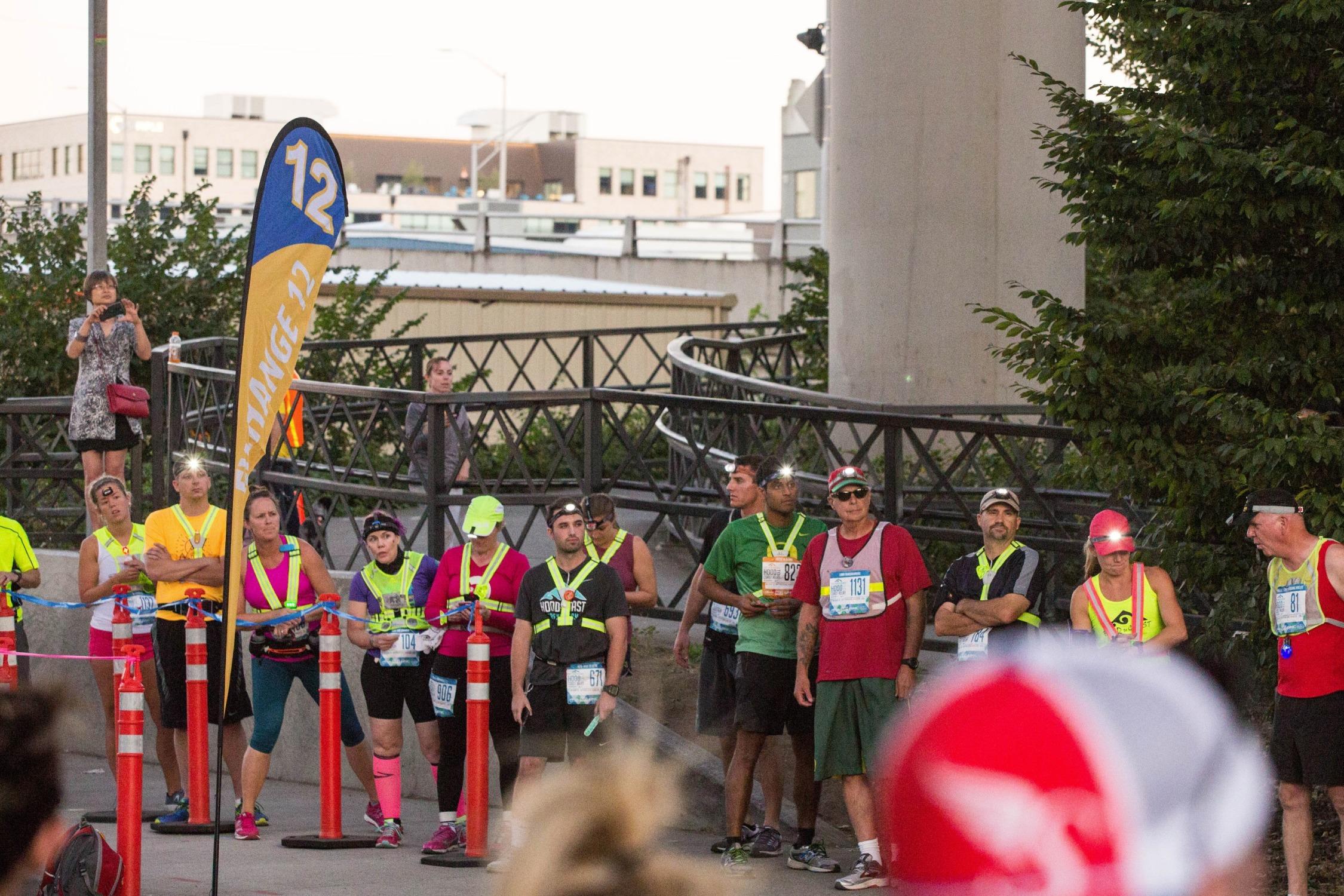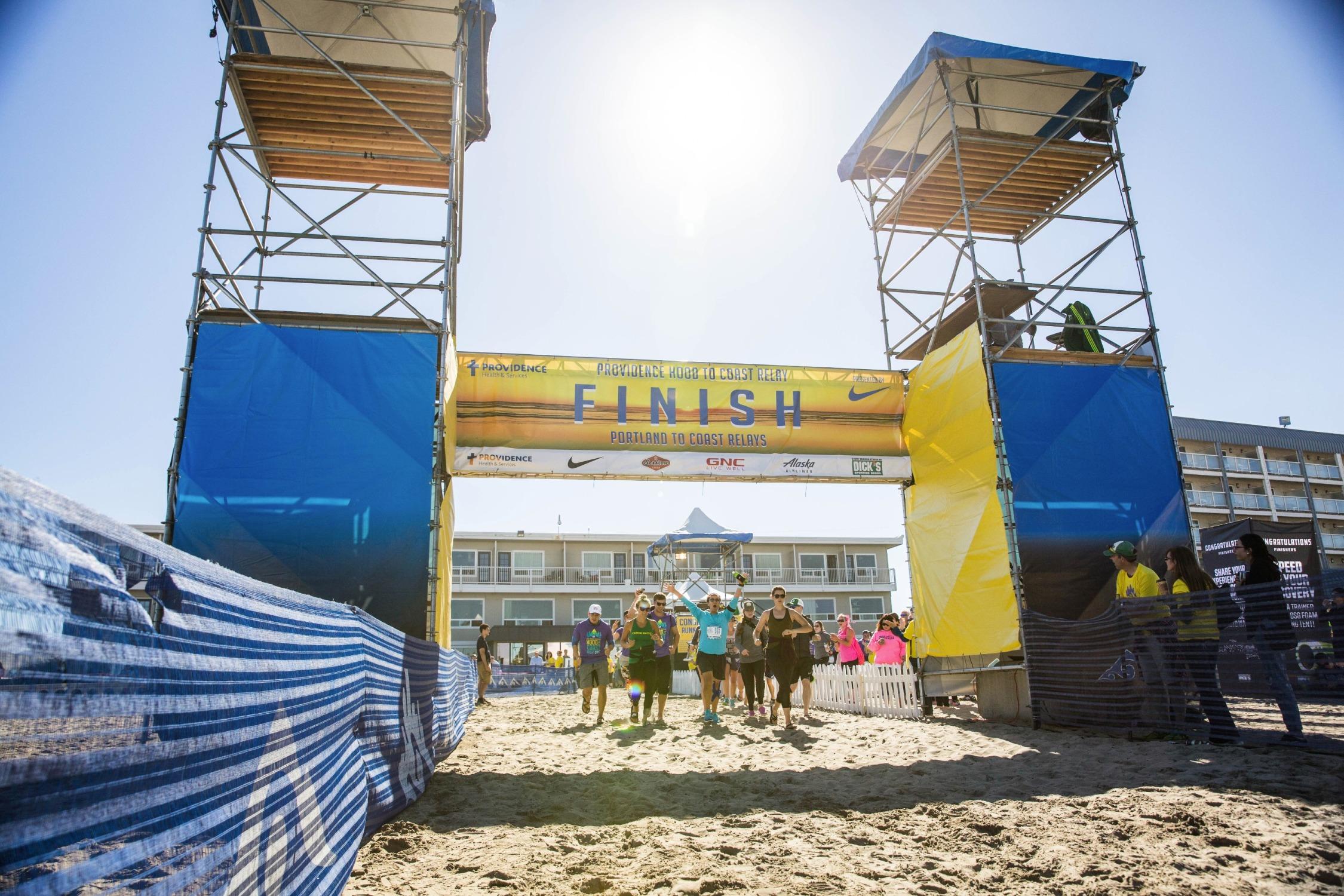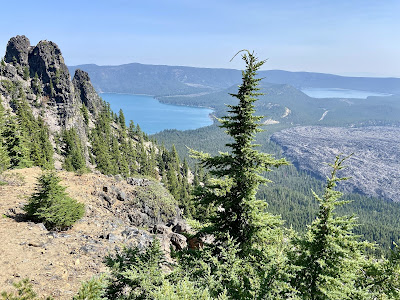The annual Hood and Portland to Coast Relay is the largest and most popular running and walking relay race in the world, drawing participants from over 40 countries. Known as the Mother of All Relays, teams run 199 miles from the top of Mt. Hood (or walk 130 miles from Portland) to the Oregon coast. The event has sold out for 30 straight years and will celebrate its 40th anniversary next August.
The course is broken up into 36 legs of varied difficulty based on distance, elevation and terrain. Most HTC teams have 2 vans, each with 6 runners. Each member runs roughly 5 miles 3 times throughout the duration of the race. Van 1 begins the relay with their first runner, while the remaining teammates drive to the end of Leg 1. Here the first runner will pass off a snap bracelet to the second runner, who will then run Leg 2. The van continues in this manner until all 6 runners have run once. At that point, Van 2 will meet at the major exchange where the last runner in Van 1 trades out with the first runner in Van 2. Van 1 gets a few hours to rest while Van 2 cycles through their runners. Like this, the vans leap frog the length of the course until the final runner in Van 2 crosses the finish line on the beach!
Last fall, Tom and I snagged a team in the lottery. While he had run HTC before, it was my first time participating in any relay. As a result, I learned the course, logistics and rules as we started recruiting runners and van rentals. We initially had a lot of interest in our team, but many of those leads fell through, which left us to pick up three runners on the HTC forum in order to fill our 12-member team.
This year, the pandemic changed several aspects of the race, including maximized staggering of the start times in order to spread out all 1,000 teams. As a result, our first van began the relay at Mt. Hood's Timberline Lodge at 3:20am on Friday. Tom captained Van 1, crewed by his two brothers, their two friends and a seasoned relay runner from the forum.

We were blessed with ideal running weather; overcast and comfortable temperatures. My first leg was a flat 6-mile stretch along the familiar Springwater Corridor in Portland. I ran Leg 12 around noon at an average of 9:45 per mile. Race pace is often quicker than in training because of the excitement, but I tried to keep pace knowing that I would have to run twice more. Due to an untimely train crossing, both vans were delayed getting to the next exchange to pick me up and drop Tom off. This exchange was also very busy because it is where the walkers begin Portland to Coast. Within 10 minutes or so, we sent Tom off and my van headed to our house to shower and rest for a few hours.

We had planned to meet back up with Van 1 in St. Helens by 5pm, but got stuck in gridlock traffic on Highway 30--our last major hiccup. As a result, Tom had to run part of our van's first leg until we could catch up. This is not in accordance with the event rules, but we justified it being a non-competitive team that had zero chance of winning. I ran Leg 24, a 5-mile stretch along a road in rural Vernonia. At 10pm, with no light pollution, the night sky was lit up with stars. Just as I remember thinking how surreal it was, I looked up to see a shooting star. 9:30-minute miles.
During our final break, my van had hoped to get a few hours of sleep at a nearby school in Jewel, but we weren't allowed inside due to COVID; so it was camping outside or sleeping in the car. We chose the latter, but it was nearly impossible to get any shut eye in our cramped car parked at the loud exchange.
We felt like zombies, and nobody wanted to run again on stiff legs, but our team carried on and met Van 1 at 3:30am on Saturday. Luckily, we did not have issues finding them despite having lost cell reception. I finished the race on Leg 36, a 5-mile mostly paved section leading into Seaside. At a 9-minute pace, I was ready to be done. The team joined me to cross the finish line at 8:30am, completing the relay in about 29 hours. We headed back to Portland shortly thereafter, as we were too tired to wait for the party to start. That night, I slept like a bear for 12 hours.

Running HTC was one of my favorite experiences to date. I have so many funny stories and wonderful memories from the event. While I am hesitant to organize a team again, I would love to run it next year. What a blast!
 |
| Bucci, Simon, Conor, Elena, Kristin, Kyle, Dominick, James, Tom, Sam, Joe |


































